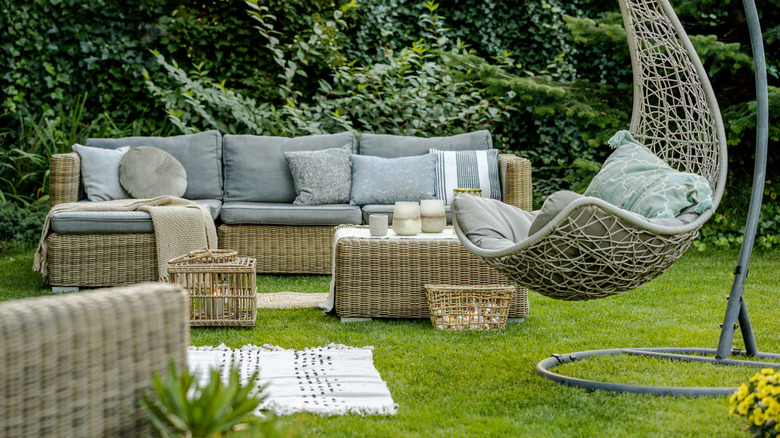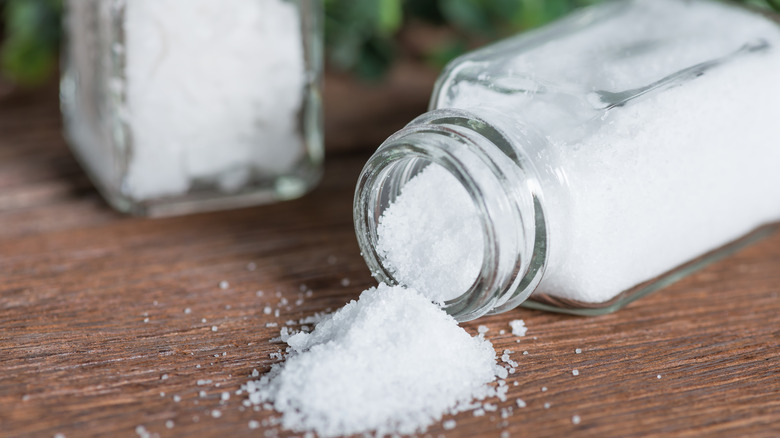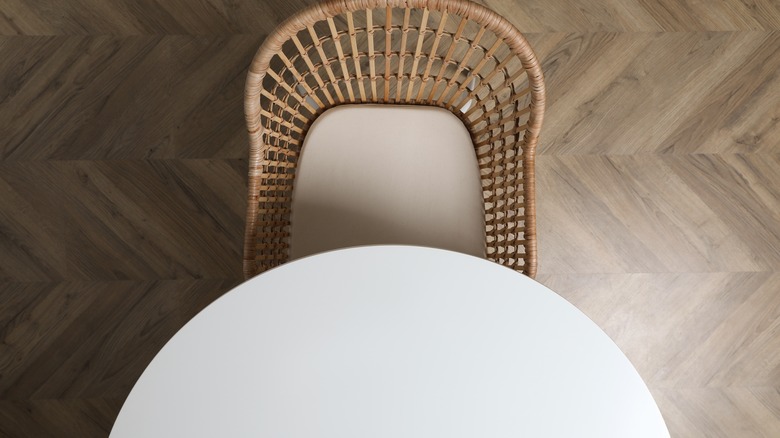The Kitchen Seasoning That Will Keep Your Rattan Furniture Looking New
Rattan furniture can be a beautiful addition to your space, both inside and outdoors. Ever-popular on patios and porches, furniture made of bamboo, sisal, jute, and other woven materials is also having a moment in popular interior trends like boho and cottagecore. Such pieces, which range from chairs and settees to bureaus, shelves, and ottomans, bring an instant sense of texture, casualness, and a tropical, earthy vibe to any room.
However, rattan and other woven materials, particularly when used outdoors, can pose challenges in cleaning and upkeep. While indoor furniture can be dusty and hard to clean, outdoor furniture is vulnerable to things like weather extremes, dirt, debris, moisture, and mold. The solution to cleaning rattan furniture may be found in a common and inexpensive item already in your kitchen – salt! With this substance and some easy cleaning techniques, your woven pieces can remain beautiful and functional for years to come.
Cleaning with salt
Salt is one of the most versatile of kitchen condiments, however, its uses go far beyond seasoning French fries. It's also particularly good at cleaning all manner of things, from wine stains on the carpet to watermarks on wooden surfaces. Not to mention, salt is far safer and more sustainable than chemical cleaners.
Cleaning rattan or woven furniture with salt is simple and effective. Create a cleaning solution of water and salt in a bucket, then scrub your furniture vigorously with a stiff brush. Make sure to clean the underside of pieces, where dirt or debris can collect, and areas that are especially prone to be touched like the seat and arms. After scrubbing, leave the furniture in a breezy, sunny place and allow it to dry completely before using it again. Doing so will restore the color of the wood and prevent mold and mildew from growing.
Caring for woven furniture
While spills and surface dirt can be wiped away in spots, rattan looks its best when cleaned with salt at least once a year. Keeping outdoor pieces out of direct sunlight and safely stored during the winter will also ensure that they stay looking their best. If you desire to have them in the sun or lack sufficient shade, try rotating pieces throughout the year.
A great time to clean with salt is right before stowing away pieces for winter, which will have them clean and ready to go in the spring. If mold is a particular concern in certain climates, you may also treat the material with a vinegar and water solution to both clean and prevent growth. For regular routine cleaning, wiping regularly with a dust cloth is great for both indoor and outdoor pieces. You can also use a brush for crevices and hard-to-reach spots.


